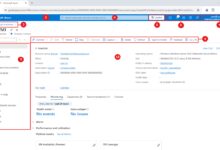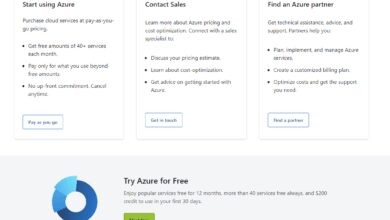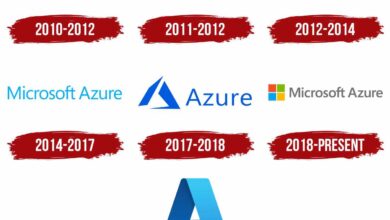Azure Log In: 7 Proven Steps to Master Secure Access Now
Logging into Azure doesn’t have to be complicated. Whether you’re a developer, IT admin, or business owner, mastering the azure log in process is your first step toward unlocking powerful cloud services securely and efficiently.
Azure Log In: Understanding the Basics

The term azure log in refers to the process of accessing Microsoft Azure’s cloud computing platform using valid credentials. This gateway allows users to manage virtual machines, databases, applications, and more through a centralized dashboard. As one of the leading cloud platforms globally, Azure supports millions of logins daily across enterprises, startups, and educational institutions.
What Is Azure and Why Does It Matter?
Microsoft Azure is a comprehensive cloud computing platform offering over 200 services, including compute power, storage, networking, analytics, and artificial intelligence. It competes directly with Amazon Web Services (AWS) and Google Cloud Platform (GCP), but stands out due to its deep integration with Microsoft 365, Active Directory, and Windows Server environments.
- Azure powers more than 95% of Fortune 500 companies.
- It operates in 60+ regions worldwide, ensuring low-latency access.
- Services range from Infrastructure-as-a-Service (IaaS) to Platform-as-a-Service (PaaS) and Software-as-a-Service (SaaS).
Because Azure hosts mission-critical workloads, secure authentication is paramount. The official Microsoft Learn documentation emphasizes identity management as a cornerstone of cloud security.
Key Components of Azure Authentication
To successfully perform an azure log in, several backend systems work together to verify your identity and grant appropriate access. These include:
- Azure Active Directory (Azure AD): The identity and access management service that handles user authentication and authorization.
- Multi-Factor Authentication (MFA): Adds an extra layer of security beyond passwords.
- Single Sign-On (SSO): Allows users to access multiple services with one set of credentials.
“Azure AD is not just for logging in—it’s the identity backbone for all Microsoft cloud services.” — Microsoft Azure Documentation
Understanding these components helps demystify why certain login methods are more secure or complex than others.
Step-by-Step Guide to Perform Azure Log In
Whether you’re new to Azure or refreshing your knowledge, following a structured approach ensures a smooth and secure login experience. Here’s how to execute the azure log in process correctly every time.
Step 1: Navigate to the Official Azure Login Page
The first step in any azure log in attempt is visiting the correct URL: https://portal.azure.com. This is the primary entry point for the Azure Management Portal.
- Always verify the URL to avoid phishing sites.
- Bookmark this page for future use.
- Use a modern browser like Chrome, Edge, or Firefox for optimal compatibility.
Some organizations may use custom domains for login (e.g., login.yourcompany.com), but they still redirect to Azure AD for authentication.
Step 2: Enter Your Work or School Account
Unlike personal Microsoft accounts (used for Outlook.com or Xbox), Azure typically requires a work or school account. This is usually in the format yourname@companydomain.com.
- If you’re part of an organization, your admin must have created your account in Azure AD.
- Personal accounts can be used only if explicitly allowed by the subscription owner.
- Incorrect domain entry (e.g., .con instead of .com) is a common cause of failed logins.
If you see the message “We don’t recognize this email,” double-check the spelling and confirm your account exists in the directory.
Step 3: Complete Identity Verification
After entering your email, Azure redirects you to the authentication provider—usually Azure AD. Here, you’ll enter your password and, if enabled, complete multi-factor authentication (MFA).
- MFA methods include phone calls, text messages, authenticator apps, or biometric verification.
- Organizations often enforce MFA via Conditional Access policies.
- Failing MFA results in denied access, even with the correct password.
For users without MFA, the system may prompt for security questions or device validation based on risk assessment.
Common Azure Log In Issues and How to Fix Them
Even experienced users encounter problems during the azure log in process. Recognizing common issues and knowing how to resolve them saves time and reduces frustration.
Issue 1: ‘User Not Found’ or ‘Account Doesn’t Exist’
This error appears when the email address isn’t registered in the target Azure AD tenant.
- Cause: Typographical errors, wrong domain, or lack of provisioning.
- Solution: Verify the email with your IT administrator. Ensure the account is synced from on-premises AD (if applicable).
- Pro Tip: Use the Microsoft Account Checker to confirm if an email is associated with any Microsoft service.
In hybrid environments, delays in Azure AD Connect synchronization can cause temporary mismatches between on-premises and cloud directories.
Issue 2: Password Expired or Reset Required
Many organizations enforce password expiration policies (e.g., every 90 days). When this happens, the azure log in flow redirects you to a password reset page.
- You must provide current credentials before setting a new password.
- If self-service password reset (SSPR) is enabled, you can recover access without admin intervention.
- SSPR requires pre-registered contact methods (email, phone, security questions).
According to Microsoft, SSPR can reduce helpdesk calls by up to 40%, making it a critical feature for large enterprises.
Issue 3: Multi-Factor Authentication Failures
MFA is a security best practice, but it can also be a source of login failures.
- Lost or broken authenticator devices.
- Outdated app versions not syncing time-based codes.
- Network issues preventing SMS or call delivery.
To mitigate this, admins should configure multiple MFA methods per user and enable backup options like app passwords or emergency codes.
Security Best Practices for Azure Log In
Every azure log in attempt is a potential attack vector. Cybercriminals use phishing, credential stuffing, and brute-force attacks to gain unauthorized access. Implementing robust security practices is non-negotiable.
Enable Multi-Factor Authentication (MFA)
MFA is the single most effective way to prevent unauthorized access. Even if a password is compromised, the second factor blocks the attacker.
- Use authenticator apps (e.g., Microsoft Authenticator) over SMS when possible—SMS is vulnerable to SIM swapping.
- Require MFA for all privileged accounts (e.g., Global Administrators).
- Leverage Azure MFA Server for on-premises integration.
Microsoft reports that MFA blocks over 99.9% of account compromise attacks.
Implement Conditional Access Policies
Conditional Access (CA) allows organizations to enforce rules based on user location, device compliance, sign-in risk, and application sensitivity.
- Block logins from high-risk countries or anonymous IP addresses.
- Require compliant devices (e.g., encrypted, updated OS) for access.
- Enforce MFA when accessing sensitive apps like SharePoint or Exchange Online.
For example, a CA policy might state: “If user is signing in from outside the corporate network AND accessing Azure Portal, then require MFA.”
“Conditional Access turns static passwords into dynamic security decisions.” — Microsoft Security Blog
Monitor Sign-In Logs and Anomalies
Azure provides detailed sign-in logs in the Azure AD portal under Monitoring > Sign-ins.
- Review failed login attempts for patterns (e.g., repeated tries from same IP).
- Set up alerts for impossible travel (e.g., login from New York and London within 30 minutes).
- Integrate with Microsoft Defender for Cloud Apps for advanced threat detection.
Regular log reviews help detect breaches early and support compliance audits.
Advanced Azure Log In Methods for Enterprises
While the standard azure log in works for most users, large organizations often require more sophisticated authentication mechanisms to scale securely.
Federated Identity with Active Directory Federation Services (AD FS)
Federation allows organizations to authenticate users on-premises rather than in the cloud. This means your password never leaves your internal network.
- AD FS acts as a bridge between on-premises AD and Azure AD.
- Users log in once (SSO) and gain access to both internal and cloud apps.
- Reduces reliance on cloud-stored credentials.
However, AD FS requires significant infrastructure investment and maintenance. Microsoft now recommends Password Hash Sync (PHS) with Seamless SSO as a simpler alternative.
Single Sign-On (SSO) for Third-Party Applications
Azure AD supports SSO for thousands of SaaS applications, including Salesforce, Dropbox, and Zoom.
- Users perform one azure log in and access all connected apps without re-entering credentials.
- Admins can assign apps to users or groups via the Azure portal.
- Supports SAML, OAuth, OpenID Connect, and password-based SSO.
This improves productivity and reduces password fatigue, which is a major contributor to weak security habits.
Using Service Principals for Automation
Not all azure log in scenarios involve humans. Scripts, CI/CD pipelines, and background services use service principals—non-human identities with limited permissions.
- Service principals are created in Azure AD and assigned roles via RBAC.
- They authenticate using secrets, certificates, or managed identities.
- Never use personal accounts for automation—this violates security best practices.
For example, a DevOps pipeline might use a service principal to deploy a virtual machine without human intervention.
Mobile and App-Based Azure Log In Experience
With remote work on the rise, accessing Azure from mobile devices has become essential. Microsoft offers several tools to make the azure log in process seamless on smartphones and tablets.
Using the Microsoft Authenticator App
The Microsoft Authenticator App is more than just an MFA tool—it can also act as a passwordless sign-in method.
- Receive push notifications for approval during login.
- Store work and personal accounts in one place.
- Use biometrics (fingerprint or face scan) to approve sign-ins.
When enabled, users can log in by opening the app and approving the request—no password needed.
Accessing Azure via the Azure App
Microsoft provides the Azure mobile app for iOS and Android, allowing administrators to monitor resources and respond to alerts on the go.
- Perform azure log in directly within the app using your work account.
- View VM status, storage usage, and billing alerts.
- Approve role assignments and conditional access requests.
The app uses modern authentication protocols and integrates with Intune for device compliance checks.
Passwordless Authentication Options
Microsoft is moving toward a passwordless future. For azure log in, several passwordless methods are now available.
- FIDO2 Security Keys: Physical devices like YubiKey that use public-key cryptography.
- Windows Hello for Business: Biometric or PIN-based login on enrolled devices.
- Phone Sign-In: Approve login via the Microsoft Authenticator app.
These methods eliminate the risks associated with passwords—phishing, reuse, and weak generation—while improving user experience.
How to Manage Multiple Azure Subscriptions During Log In
Many users have access to multiple Azure subscriptions—perhaps one for development, one for production, and another for testing. Managing these efficiently starts with the azure log in process.
Understanding Tenants, Subscriptions, and Directories
Before diving into login mechanics, clarify these key concepts:
- Tenant: A dedicated instance of Azure AD, representing an organization.
- Subscription: A billing and resource management boundary within a tenant.
- Directory: Often used interchangeably with tenant; it stores user and app identities.
During azure log in, you authenticate to a tenant. From there, you can switch between subscriptions you have permissions on.
Switching Between Subscriptions After Log In
Once logged in, use the subscription filter in the Azure portal to switch contexts.
- Click your account name in the top-right corner.
- Select “Switch Directory” or “Change Directory” to move between tenants.
- Use the subscription dropdown in the toolbar to select the active subscription.
PowerShell and CLI users can use commands like Set-AzContext to manage subscription context programmatically.
Best Practices for Multi-Subscription Access
To avoid confusion and misconfigurations:
- Use consistent naming conventions (e.g., “Prod-EastUS”, “Dev-WestEU”).
- Apply Role-Based Access Control (RBAC) to limit who can access which subscription.
- Leverage Azure Management Groups for hierarchical governance across subscriptions.
Clear separation between environments reduces the risk of accidental deletions or data leaks.
Future Trends in Azure Log In and Identity Management
The way we perform azure log in is evolving rapidly. Driven by security threats, user experience demands, and regulatory requirements, Microsoft continues to innovate in identity and access management.
The Rise of Identity as a Service (IDaaS)
Azure AD is a prime example of IDaaS—cloud-based identity management that scales globally.
- Reduces dependency on on-premises infrastructure.
- Enables real-time threat detection and automated responses.
- Supports hybrid and multi-cloud environments seamlessly.
As more organizations adopt zero-trust models, IDaaS becomes the foundation of secure access.
Integration with AI-Powered Threat Detection
Microsoft is embedding AI into Azure AD to detect anomalous behavior during the azure log in process.
- AI analyzes sign-in patterns, device health, and geolocation.
- Flags suspicious activities like impossible travel or unfamiliar apps.
- Automatically blocks or challenges high-risk logins.
Features like Identity Protection use machine learning to assign risk scores and recommend actions.
Toward a Passwordless Enterprise
Microsoft has publicly committed to a passwordless future. In 2023, over 50% of Azure AD customers enabled at least one passwordless method.
- Phishing-resistant authentication is now a regulatory requirement in sectors like finance and healthcare.
- Organizations report higher user satisfaction with passwordless flows.
- Microsoft encourages disabling password authentication entirely for certain roles.
The future of azure log in isn’t about remembering credentials—it’s about seamless, secure, and intelligent access.
What if I forget my Azure account password?
If you forget your password, use the “Forgot password?” link on the Azure login page. You’ll be guided through a recovery process that may involve email, phone, or security questions. If self-service password reset (SSPR) is enabled, you can regain access immediately. Otherwise, contact your organization’s IT administrator for assistance.
Can I use a personal Microsoft account to log in to Azure?
Yes, but only in limited scenarios. Personal Microsoft accounts (e.g., @outlook.com) can be used to create free Azure subscriptions or trial accounts. However, in enterprise environments, organizations typically require work or school accounts managed through Azure AD for better control and security.
Why am I being asked for MFA every time I log in?
If you’re repeatedly prompted for multi-factor authentication, it may be due to your organization’s Conditional Access policies, browser settings, or device compliance status. Ensure you’re using a trusted device and browser, and check if “remember MFA” options are enabled. Some policies require MFA for every sign-in as a security measure.
How do I log in to Azure if I’m using a guest account?
Guest users (external collaborators) can log in via the Azure portal using the email they were invited with. They’ll go through a process called “home tenant resolution,” where they authenticate against their own organization’s identity provider. Once approved, they gain access based on the permissions assigned to them in your Azure AD.
Is there a way to automate the Azure log in process for scripts?
Yes, automation is possible using service principals, managed identities, or Azure CLI/PowerShell with stored credentials. However, never hardcode passwords in scripts. Instead, use certificate-based authentication or Azure Key Vault to securely retrieve secrets during runtime.
Mastering the azure log in process is essential for anyone working with Microsoft’s cloud platform. From basic access to advanced identity management, understanding the mechanics, security practices, and troubleshooting techniques ensures smooth and secure operations. As Azure continues to evolve, staying updated on authentication trends—like passwordless login and AI-driven security—will keep your organization ahead of the curve. Whether you’re a beginner or a seasoned pro, the principles of secure, efficient access remain the same: verify identity, enforce least privilege, and monitor activity.
Further Reading:









